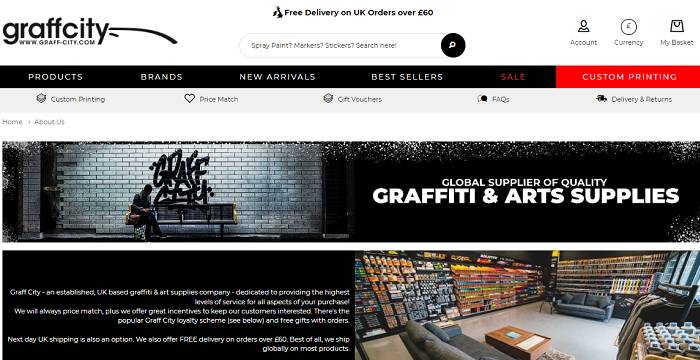Inventory Optimization Guide 2023: Strategies, Tips and FAQs
Managing inventory can feel like a never-ending battle, especially when data shows that inventory distortion cost businesses a staggering $1.8 trillion in 2020. But, there’s good news! By reducing stock-outs and overstocks, you can shave off up to 10% of your inventory costs.
This is where inventory optimization comes into the picture – more and more businesses are pivoting to this strategy, with 72% of retailers planning to revamp their supply chains for real-time visibility enabled by tech. So, whether you’re an operations manager, an inventory guru, or a savvy business owner, buckle up – inventory optimization isn’t just a buzzword, it’s your secret weapon to outrunning the competition.
What is Inventory Optimization?
At its core, inventory optimization is a strategic approach that keeps the right volume of stock to fulfill demand, while also minimizing the expenses associated with inventory management. It’s a balancing act that aims to mitigate frequent inventory-related concerns such as stockouts, overstock, and backorders.
As a key ecommerce strategy, inventory optimization goes beyond traditional stock control. It incorporates the use of sophisticated tools, technologies, and procedures that provide real-time inventory tracking, enabling businesses to respond swiftly to market fluctuations.
The Role of Inventory Optimization in Ecommerce
Inventory optimization is a pivotal gear in the ecommerce machine. It’s all about having the right products, in the right quantities, at the right time. When done right, it contributes significantly to business efficiency.
Optimizing inventory means less money tied up in stock, lower storage costs, and better cash flow. It also translates to happy customers – no one likes seeing “out of stock” when they’re ready to hit “buy now”.
On the flip side, ignoring inventory optimization can land businesses in hot water. Overstocking ties up precious capital and leads to storage issues, while understocking can result in lost sales and disappointed customers. Recent stats show that in the US alone, retailers are sitting on $740 billion in unsold goods. That’s a hefty investment not being utilized.
Inventory optimization is not just a nice-to-have, it’s a must-have. It’s your path to keeping both your customers and your accountants in the green.
Key Steps for Successful Inventory Optimization

Let’s dive into the key steps for successful inventory optimization…
Demand Forecasting for Efficient Inventory Management
First up is demand forecasting. This is like your business’s weather forecast, helping you predict customer demand for your products. The “why” is simple: accurate forecasting means you’re not left with excess stock or, even worse, a frustrating “out of stock” sign.
Common ways to forecast demand include time-series analysis, which looks at past sales to predict future ones, and causal models, which consider factors like promotional campaigns or market trends. With Linnworks, demand forecasting becomes less about guesswork and more about data-driven decisions. Retailers can use the platform to understand how demand fluctuates, preventing issues like overstocking and stock-outs which can drain your cash flow. And it will also help you when forecasting demand in future.
Inventory Categorization for Effective Stock Management
Next, we have inventory categorization, a method to manage your stock effectively.
Ever heard of ABC analysis? It’s a classic inventory categorization technique where ‘A’ items are high-value products with low sales frequency, ‘B’ items are moderate-value with moderate frequency, and ‘C’ items are low-value with high sales frequency.
Effectively categorizing your inventory means you can prioritize and manage your stock based on its categorizations.
Replenishment Strategy: Meeting Customer Demand with Precision
Now let’s talk about the replenishment strategy. This is your game plan for how and when to restock your products. A Just-In-Time (JIT) strategy, for instance, focuses on replenishing stock just as it’s about to run out, minimizing storage costs. Economic Order Quantity (EOQ), on the other hand, calculates the ideal order quantity that minimizes both ordering and holding costs.
Different strategies suit different businesses when it comes to inventory planning. Linnworks can help you figure out which one is your perfect fit, and can even provide automation tools to execute your chosen strategy seamlessly.
Reorder Point Calculation for Optimal Inventory Levels

Reorder points are the red flags that signal it’s time to restock. Calculating them accurately is crucial for maintaining optimal inventory levels and avoiding stockouts or overstocks.
Determining the right reorder points can be tricky, but with Linnworks, the heavy lifting is done for you. The system considers factors like lead times and desired service levels, helping you set reorder points that keep your inventory in the sweet spot.
Safety Stock Calculation for a Resilient Supply Chain
Finally, we come to safety stock. This is your buffer against the unexpected, like sudden surges in demand or supply chain disruption. It’s your safety net, there to catch you when your inventory turnover outpaces your forecasts.
Normand Chevrette, President & CEO of CME Corp, says “Calculating safety stock is essential in optimizing inventory for a resilient supply chain. Safety stock serves as a protective buffer against uncertainties and disruptions. Striking a balance between holding costs and meeting customer demand is vital in establishing the optimal safety stock level.
To achieve this, a thorough analysis of historical demand patterns, lead times, and supplier reliability is necessary. Consider seasonality, market trends, and potential risks directly influencing the supply chain. You can also employ statistical methods, such as calculating standard deviation and setting service level targets, to quantify the desired level of risk mitigation.
However, avoid overestimating safety stock, as it results in tying up capital and incurring unnecessary costs. Conversely, underestimating safety stock can lead to stockouts and dissatisfied customers. That said, you must regularly use real-time data and collaborate with suppliers to monitor and adjust safety stock levels when needed.”
Linnworks has you covered here too, offering inventory management software to help calculate and manage your safety stock effectively.
Benefits of Inventory Optimization
When you optimize inventory, it revolutionizes your business operations. It strips away inefficiencies and adds adaptability, delivering remarkable benefits and substantially boosting your business performance.
Increased Efficiency
If your business were a machine, inventory optimization is the oil that keeps it running smoothly. It streamlines operations by ensuring that you have the right products, in the right quantities, at the right time. This precision in managing stock levels eliminates waste and prevents the dreaded scenario of stock-outs or overstocking.
Cost Reduction
Maintaining inventory is not a free endeavor. In fact, the costs associated with carrying inventory, including storage, insurance, and potential depreciation, can weigh heavily on a company’s finances. Inventory optimization techniques are your secret weapon in the battle against these spiraling costs.
Maintaining optimal stock levels minimizes carrying costs and prevents the accumulation of dead stock. This helps you make the most of your investments while minimizing unnecessary expenses.
Improved Customer Satisfaction

Accurate inventory management also plays a crucial role in improving customer satisfaction. Imagine a customer, thrilled to have found the perfect product on your site, only to discover it’s out of stock. Such scenarios can be incredibly frustrating for customers and often result in lost sales and customer churn, and can potentially harm your business’s reputation.
On the other hand, when your optimize inventory, you’re always ready to meet your customers’ needs. You have the right products available when your customers want them. This not only leads to better customer service but also enhances customer satisfaction and loyalty.
Implementing Inventory Optimization Techniques into Your Strategy
Optimizing your inventory can be the game-changer your business needs. Let’s look at the intricacies of assessment, tool selection, and execution…
Assessment
The first step involves identifying the pain points in your current inventory management system. Perhaps you’re grappling with excessive overstock or frequent stockouts. Maybe your backup stock isn’t providing the buffer you need, or demand forecasting has been hit or miss. It’s important to always be honest and thorough at this point, as understanding your challenges is the foundation for the entire optimization process.
Selection of Tools
Once you have a clear picture of your current inventory situation, the next step is selecting the right tools to help streamline your processes. Linnworks, for instance, offers comprehensive features for inventory management. Its demand forecasting capabilities can help you predict future sales, minimize the risk of stockouts and reduce overstock.
There are tools to help with reorder point calculation, ABC inventory categorization, and safety stock calculation, empowering you to manage your inventory with precision and confidence.
Execution
With the tools in place, it’s now time to execute your inventory optimization plan. This involves implementing the strategies you’ve chosen, such as setting up your ABC inventory categorization or fine-tuning your safety stocks.
Remember, this isn’t a one-and-done deal. You’ll need to monitor your inventory data regularly to ensure that your strategies are working as intended. Adjustments may be necessary as market conditions change, your business grows, or new insights come to light.
Case Study: Successful Inventory Optimization

Let’s take a look at Linnworks in action and review how we helped Graff City overcome its inventory management hurdles.
Graff City has blossomed into a multi-million-pound art tools supplier in recent years. As their inventory exploded to 240,000 spray cans alone, manual spreadsheet management led to overstocking, overselling, and customer disappointment. Enter Linnworks.
Through our partnership, Graff City gained clear, data-driven insights into their inventory needs, reducing 8 hours of weekly labor to a mere 30 minutes, and allowing for accurate reordering. Linnworks’ forecasting capabilities use historical data and market trends to predict inventory needs, eliminating excessive or insufficient stock and improving customer satisfaction.
As Graff City continues to scale globally – partnering with other leading art manufacturers – they trust Linnworks to keep their inventory balanced and customer experience at an all-time high. With the right stock on hand at the right time, they’re prepared for any demand, proving that optimized inventory management can be a business’s best tool. Read the full case study, here.
Optimize Your Inventory with Linnworks
Inventory management can be quite challenging, but there’s a silver bullet – inventory optimization.
This isn’t a dated, ineffective strategy. We’re talking about a modern, performance-boosting approach that offers compelling benefits, such as operational efficiency, significant cost reduction, and improved customer satisfaction.
Let’s focus on the crucial components that make this possible: demand forecasting, inventory categorization, replenishment strategies, reorder point calculation, and safety stock calculation.
Consider the case of Graff City, who traded their tedious spreadsheets for a more efficient solution. They’re not just managing their inventory now; they’re mastering it, reducing labor time, and eliminating issues like overstocking and stock-outs.
The bottom line: If you’re weary of wrestling with your inventory, it’s time to enlist expert help. Linnworks provides the ultimate inventory management software you need.
If you’re ready to transform your static inventory into a dynamic, profit-generating powerhouse, then reach out to find out more.
Inventory Optimization FAQs

What is inventory optimization?
The inventory optimization process involves a methodical approach focused on maintaining optimal inventory levels. This strategy allows businesses to meet customer demand effectively while minimizing associated inventory costs. It enhances business efficiency, reduces overstock and stock-outs, and boosts profitability.
How do you optimize inventory?
Optimizing inventory management involves several steps: accurate demand forecasting based on historical sales data and market trends, setting precise reorder points to prevent stock-outs, categorizing inventory based on importance, and utilizing safety stock to cushion against unforeseen demand.
Implementing advanced tools and software can automate these processes, making inventory management more efficient.
How to calculate optimal inventory levels?
Optimal inventory levels can be calculated by employing an inventory management method known as Economic Order Quantity (EOQ). This model strives to find the ideal order quantity that minimizes total inventory costs, which includes ordering costs, holding costs, and shortage costs.
What components are crucial when optimizing inventory?
The key components of inventory optimization include accurate demand forecasting, efficient inventory categorization, strategic replenishment policies, precise calculation of reorder points, and a well-planned safety stock strategy. The integration of technology and data analytics for real-time tracking and decision-making is also critical for successful inventory management and optimization.